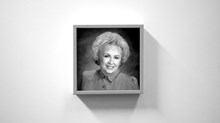Willow Creek Community Church in South Barrington, Illinois—the quintessential "megachurch"—is about to get even bigger. In addition to a 7,000-square-foot expansion at its main campus, the church is looking for 12 local auditorium spaces to host mixed-media services: live worship music and prayer coupled with video-screen preaching. The church knows that sermons by Pastor Bill Hybels are a huge draw for the 17,000 people who already attend its six weekly services, but it also knows that many people are unwilling to drive more than 30 minutes for the experience. The satellite congregations propose a new solution to a not-so-new problem.
Though he lived nearly 1,600 years ago, John Chrysostom would have understood Hybels' situation. He, too, attracted sometimes overwhelming attention for his preaching. "Chrysostom" is actually a nickname, meaning "golden mouth," that was given to him after his death in recognition of his superlative oratorical gifts. His messages moved many people to change their lives. Other listeners, motivated by jealousy or distress that his words struck so close to home, moved to have him banished.
As archbishop of Constantinople, capital of the Roman Empire, John also led a large congregation. In his day, the "megachurches" of Rome, Alexandria, Antioch, and Constantinople each had about 100,000 members, with church "staffs" in the hundreds. To serve such a crowd, John led services every Sunday and saint's day, most weekdays, and several evenings, for parishioners who worked late.
Third, John, like Hybels, was known for effectively applying scriptural insights to everyday life. He denounced such modern-seeming sins as abortion, materialism, and horse-race gambling while encouraging daily repentance and devotional reading. Historian Hans von Campenhausen wrote that John's sermons "are probably the only ones from the whole of Greek antiquity which … are still readable today as Christian sermons. They reflect something of the authentic life of the New Testament, just because they are so ethical, so simple, and so clear-headed."
While John and Hybels would have a lot to discuss if they ever met, John's views on ministry would likely align him with the critics of Willow Creek's latest plans.
One of these critics, Calvin College professor Quentin Schultze, expresses concern that a huge, multifaceted ministry based so heavily on one man's preaching could easily slip into a personality cult. John Chrysostom, who incidentally never wanted to be an archbishop (he was abducted by soldiers and forced to take the post), shared similar fears. In his treatise "On the Priesthood," he wrote, "I do not know whether anyone has ever succeeded in not enjoying praise. And if he enjoys it, he naturally wants to receive it. And if he wants to receive it, he cannot help being pained and distraught at losing it. … Men who are in love with applause have their spirits starved not only when they are blamed off-hand, but even when they fail to be constantly praised."
Larry Eskridge, associate director of the Institute for the Study of American Evangelicals at Wheaton College, thinks that, while video preaching might get people in the door, it's probably not enough to keep them around. John was concerned about preaching-as-entertainment, too. "Most people usually listen to a preacher for pleasure, not profit, as though it were a play or a concert," he complained. Speaking to his own often unruly congregation, he once tried to forbid applause—a suggestion that generated a rousing ovation.
Schultze, Eskridge, and others hold more serious reservations about the accountability lost when a church goes long-distance. Willow Creek plans to foster accountability by placing a pastor in each satellite church for face-to-face contact, but what about the bond between preacher and listener? John certainly would have been loath to sever that connection. "Preaching improves me," he told his congregation. "When I begin to speak, weariness disappears; when I begin to teach, fatigue too disappears. Thus neither sickness itself nor indeed any other obstacle is able to separate me from your love. … For just as you are hungry to listen to me, so too I am hungry to preach to you."
For all of the apparent dichotomies between John's down-to-earth, relationally intense ministry and the emerging megachurch model, it's not fair to divide the two with an impermeable line. John's influence spread far beyond his enormous diocese through the use of available media technologies. More than 800 of his sermons survive today because they were written down, copied, and distributed. The liturgy celebrated nearly every week in the Eastern Orthodox Church also reflects his handiwork. Even John's face appears in many Orthodox churches—not on a video screen, but in iconography. As an early pope wrote, "Wherever he is read, there he still preaches today."
* For more on John Chrysostom, see CH issue 44, available at the Christian History store.
* Continuing coverage of Willow Creek's expansion plans appears at Christianity Today magazine (see especially the top item in the June 13 Weblog).
Elesha Coffman is managing editor of Christian History, and can be reached at cheditor@christiantytoday.com.
The online issue archive for Christian History goes as far back as Issue 51 (Heresy in the Early Church). Prior issues are available for purchase in the Christian History Store.
Copyright © 2001 by the author or Christianity Today/Christian History magazine.
Click here for reprint information on Christian History.

Support Our Work
Subscribe to CT for less than $4.25/month




























